
Traditional Tobacco
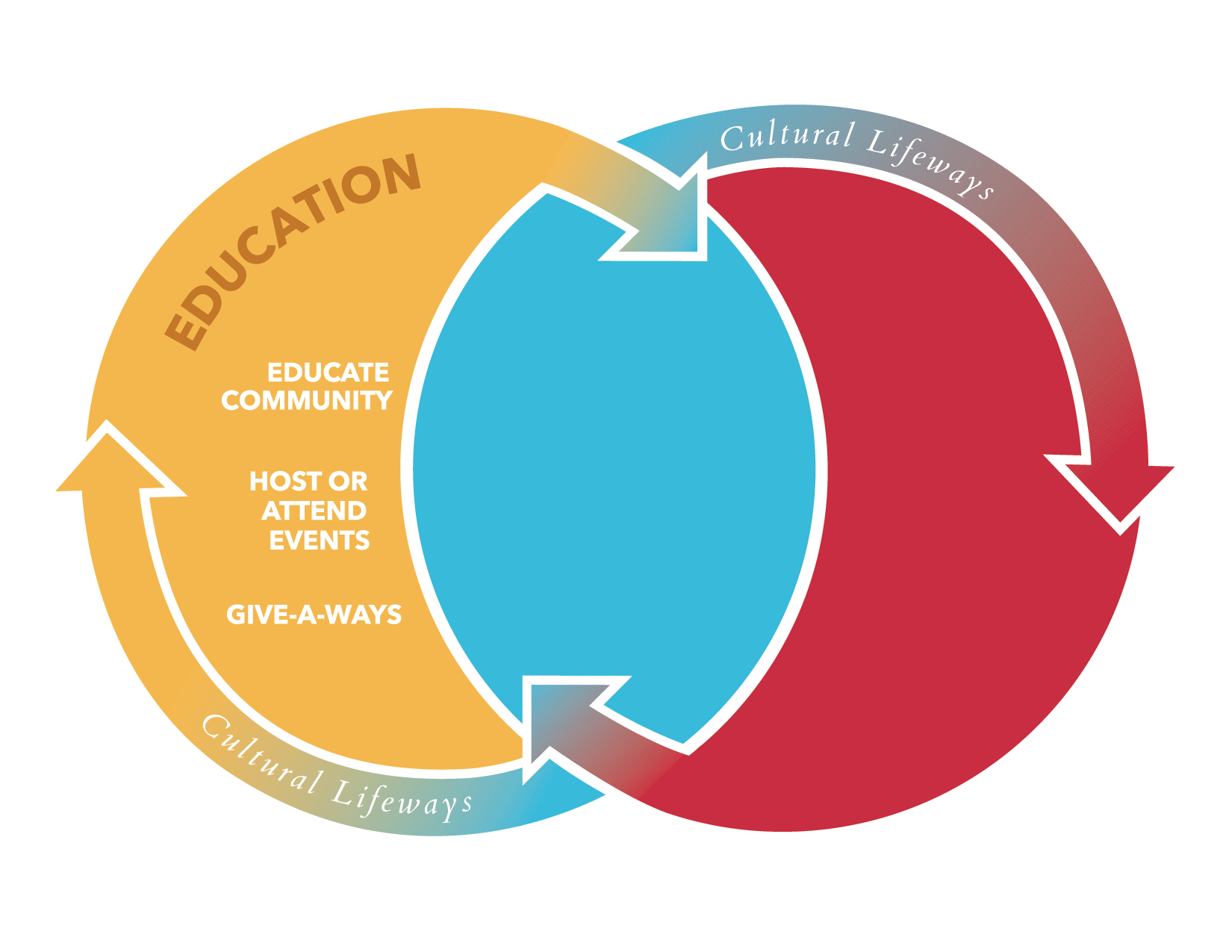
COMMERCIAL TOBACCO USE
- Colonization – tobacco was exported by settlers and commercialized
- Federal assimilation policies – to comply with the law, commercial tobacco was used for traditional purposes until the American Indian Religious Freedom Act was passed in 1978
- Marketing – Big Tobacco’s exploitation of tribal sovereignty1 and misappropriation of Native people2 led to commercial tobacco encroaching on traditional practices
- Social norms – exposure to commercial tobacco in everyday life desensitizes Native people to it’s harms; youth are especially vulnerable to this
Addressing accessibility of traditional tobacco and empowering Native people to reclaim traditional tobacco practices is an act of decolonization that has potential to reduce use of commercial tobacco.
Planning
- Talk with local cultural leaders about the barriers to traditional tobacco use they would like to address. This may included reduced access to sacred plants or community knowledge of cultural teachings.
- Opagi (offer traditional tobacco in a respectful way for a spiritual purpose)2 to a cultural leader to ask for support to address the barriers. Follow their lead. Learn the tradition of Čaŋšášá in this video.
- Support cultural leaders to plan an event to reclaim traditional tobacco. This may include planting traditional tobacco in an accessible location, or hosting a hands-on educational activity to educate community members interested in learning traditional tobacco practices.
Resources
- A leader in revitalizing Lakota traditional tobacco practices is Mni Wichoni Health Circle, who developed a Chansasa Revitalization Project Resource Guide. The guide describes how community land stewards were supported in “reconnecting to ceremony, prayer, relationship to the land, and storytelling practices on the land, while learning about chansasa and the environment it thrives within.”
- The SacRED Willow book is another valuable educational resource for Lakota communities
- The Keep It Sacred website houses many resources on traditional tobacco relevant to other Tribes
- The South Dakota Tobacco Control Program is a great resource to educate on Sacred Čaŋšášá and commercial tobacco
- Coming soon! A video documenting a Čaŋšášá harvesting event on the Oglala Sioux Tribe
Traditional Tobacco Garden
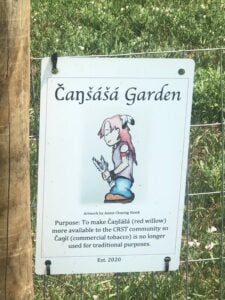
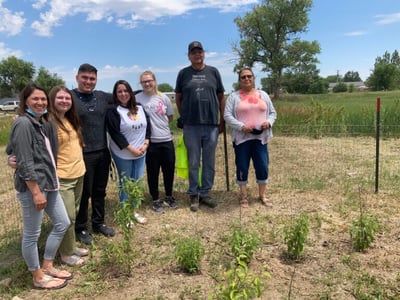
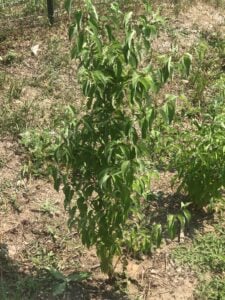
Čaŋšášá Retreat
Lakota cultural leaders shared stories and traditional tobacco teachings with Čaŋli Coalition members eager to learn and share Lakota protocols and practices. During the harvesting season in late winter, before the Thunder Beings return, the group gathered on the land for hands-on learning to harvest Čaŋšášá. Then the group moved indoors to scrape the branches and prepare the Čaŋšášá to dry. The Čaŋšášá is then given away to community members to use for offerings, prayers, gifts, and in the sacred pipe (čaŋúpa).
This retreat has resulted in Čaŋli Coalition members and partners with expanded knowledge to preserve and pass on traditional tobacco teachings. View Photos and highlights of the stories shared at the retreat.
Students were also invited to learn to shave Čaŋšášá branches in the classroom. The students used what they shaved and dried to honor their graduating peers.
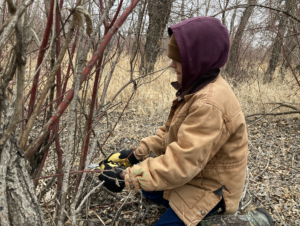
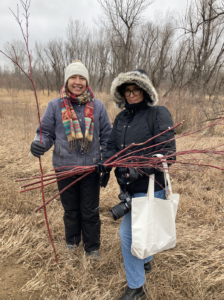
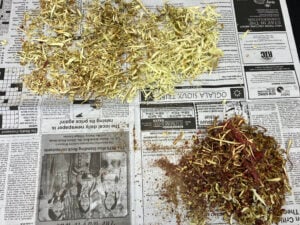
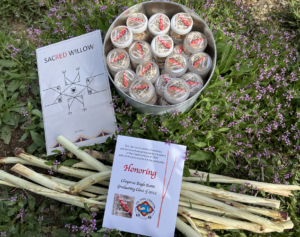
References
- Lempert & Glantz. (2018). Tobacco Industry Promotional Strategies Targeting American Indians/Alaska Natives and Exploiting Tribal Sovereignty. Article accessible here.
- D’Silva et al. (2018). Tobacco industry misappropriation of American Indian culture and traditional tobacco. BMJ. Article accessible here.





